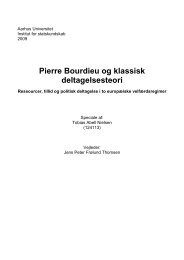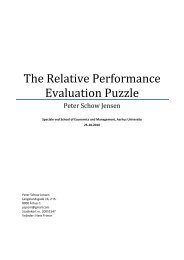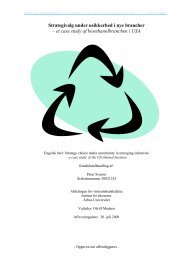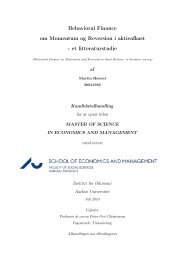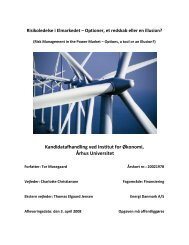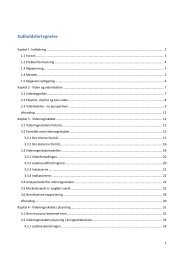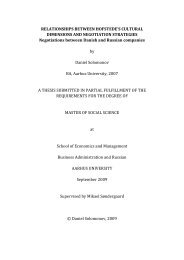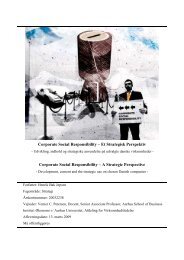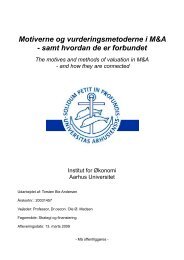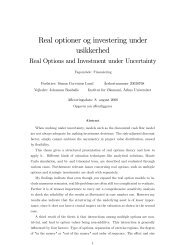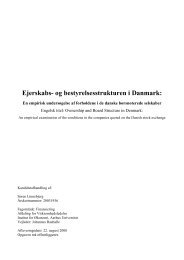Statiske og dynamiske tilgange indenfor strategifeltet - Aarhus ...
Statiske og dynamiske tilgange indenfor strategifeltet - Aarhus ...
Statiske og dynamiske tilgange indenfor strategifeltet - Aarhus ...
- No tags were found...
You also want an ePaper? Increase the reach of your titles
YUMPU automatically turns print PDFs into web optimized ePapers that Google loves.
Rasmus Sylvester Iversen - 20021479<br />
Institut for Økonomi, <strong>Aarhus</strong> Universitet<br />
<strong>Statiske</strong> <strong>og</strong> <strong>dynamiske</strong> <strong>tilgange</strong> <strong>indenfor</strong> <strong>strategifeltet</strong><br />
Kandidatafhandling<br />
Abstract<br />
The strategic industry perspective presented by M.E. Porter, in his book Competitive Strategy as<br />
well as “The Resource Based View of the Firm”, have in many years been the dominating paradigms<br />
in the strategic management field. The reason for this being that they both give some relatively<br />
formalized analytical frameworks, which are fairly straightforward to use normatively. However<br />
both paradigms have also been criticized of being too static.<br />
The main purpose of this thesis is to analyze to which extent it has been possible within these two<br />
paradigms to add more dynamic thinking. This has been done by considering whether the theories,<br />
Competitive Advantage of Nations and Dynamic Capabilities Approach, considered in this thesis as<br />
the dynamic “superstructures” within the two paradigms, have succeeded in adding more dynamics<br />
to respectively the Competitive Strategy and The Resource Based View of the Firm. In addition to<br />
this it has been analyzed whether there are any complications concerned with using the dynamic<br />
“superstructures” as a normative strategic tool.<br />
The primary weakness of the two dominating paradigms appears to be that their analytical frameworks<br />
merely contribute with a static snapshot explaining only, which sources represent a competitive<br />
advantage at any given point in time. The reason for these static approaches is that both paradigms<br />
have their roots in microeconomics.<br />
The thesis illustrates that Competitive Advantage of Nations and Dynamic Capabilites Approach are<br />
able to add more dynamics as they focus on the dynamic process through which a competitive advantage<br />
is achieved and developed. The primary reason for this being that the dynamic “superstructures”,<br />
instead of having their roots in the microeconomic equilibrium foundation, are inspired by<br />
more development focussed approaches like the Austrian school of economics and evolutionary<br />
theories.<br />
However despite the fact that these dynamic ”superstructures” are able to add more dynamics to the<br />
two paradigms their normative usability can still be criticized. For instance because the strategic<br />
suggestions that both theories come up with are based on elements that the company has only lim-




